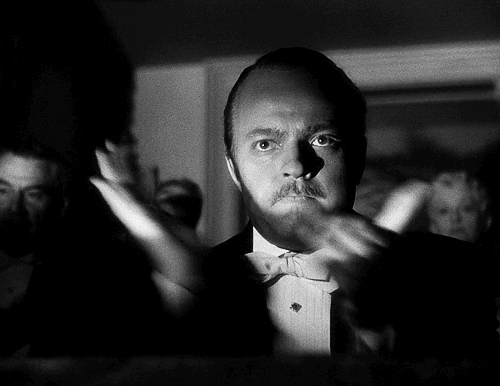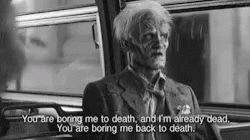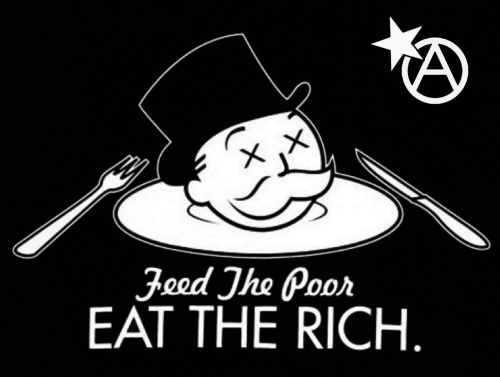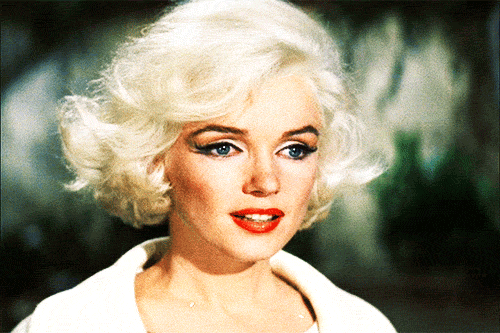The chapter heading indicates it’s three weeks before the night of the murders. Wait, you mean we have multiple chapters to go before we finally get to the action?

And it’s a big flaw of this series that my first reaction to seeing that heading was to scream “Wait, you mean we have to spin our wheels for four or five chapters before we get to the murders?” (Future Me: I did some flipping through the book to see how much wheel-spinning was in store for us, and we don’t get to Niles arriving at their door until the end of chapter 7. So seven chapters of wheel-spinning. The Madison Square Garden Concert takes up about three chapters, which is insane.)

All that’s going to be in these first few chapters is personal would-be drama about Rennie and Turk and their perfect imaginary relationship that holds no interest for 98% of the book’s readers. In other words, a little less talk and a lot more action, please.
Total transparency—nothing at all happens in this chapter except for Rennie having a brief exchange with Turk about how wonderful New York City is, and then we get eight pages of summary about their house, their life in New York, how they made the decision to move, and some residual Stephen Lacing-bashing. NOTHING FUCKING HAPPENS! This is not how you start off a book, people!

So the chapter starts out the way anyone who’s familiar with Rennie would expect: she lets her New York provincial flag fly.
God, she loved New York.
This was a joke in one season of Archer, when Ray’s brother kept calling it “New York City,” and Archer saying he could just say New York. In my opinion, that’s a New York provincial attitude, as a person can say that they’re from New York and not be from New York City (Ithaca, Rochester, Albany, Syracuse, the Finger Lakes region are all covered by “New York”). It implies that there’s nothing of note inside the County and State of New York other than New York City.
Why is she so crazy about New York City?
…this was her home: clever, vital, grimy, sublimely uncaring of anything beyond its rivers.
If you take out grimy, you might as well be describing Rennie, or Rennie as she sees herself.

Turk, who’s with her, serves as her sounding board and simps for her love for New York City.
It’s a real city, like London…[l]ike Rome must have been, back in the day.
The saying “back in the day” is a mild anachronism, but I’ll let it go because we have more of Rennie’s New York chauvinism in store for us.
“Oh, we’re better than Rome. We’re the mightiest city that ever was.”

One just knows that if Patricia Kennealy-Morrison had been born in Washington, DC, or Chicago or New Orleans, Rennie would be saying the same thing about those cities. But fuck North Babylon, NY, right?

Since Kennealy-Morrison lived in the East Village for almost her entire adult life, we now get some local color, as the Rennieturk are coming back from the Second Avenue Deli with food. Apparently it’s half a block from their brownstone(s). Then the writer uses the word “wodge,” which I wasn’t familiar with but is used correctly, even though it is another Britishism that Rennie shouldn’t know and is not appetizing in terms of a sandwich (it means lump or wad). Then we find out it’s mid-November, as if to rub the reader’s nose in how much wheel-spinning is in the offing.

And now, an entire book late, we get a reason for why the Rennieturk moved to New York City. It’s because New York City is closer to England than Los Angeles is and Turk has aristocratic responsibilities since his grandfather died. But he didn’t have those responsibilities when they first moved there, at the start of the last book, so this explanation doesn’t hold water. Besides, we all know the real reason is because the writer is a New York chauvinist and Turk is a cardboard automaton simp who would never stop her from doing anything at all because she calls all the shots in the relationship, just the way she’s done with every man she’s been involved with.

In order to divert us from Turk’s simp status, the writer tells us that “he intended that he and Rennie should live like grownups: six months a year in New York, split the rest of their time between L.A. and England, schedule subject to change without notice.” Something I’ve noticed Kennealy-Morrison does a lot—eschews the use of the word “adult” in favor of “grownup.” It just makes her characters sound more childish. Plus, why does he want to go to Los Angeles at all? Didn’t he have that wealth flex about having home recording studios at his each and every home? At least we find out that Rennie, after three years, has finally given up her impossible six-room apartment across the street from Golden Gate Park with a view of the Golden Gate Bridge that she could afford when she was flat broke.

The writer then gives us some info about Rennie’s native New Yorker status.
Not without some snobbishness about Staten Island, though. And that’s our segue into Rennie’s scheduled Stephen Lacing-bashing for the evening!

Then she’d met and eloped with young corporate lawyer Stephen Lacing, and he’d made her drop out of grad school and dragged her out west to his hometown by the Golden Gate.
In Ungrateful Dead, the first book of the series, there is no indication that he forced her to drop out of graduate school. It was never spelled out for us that she’d dropped out, as she’d been either a year or two ahead of schedule because she was so ungodly young when she started college. She did leave during the spring semester, but since he’d left her there to follow him to San Francisco, one could assume that he’d allowed her to finish out the semester (or the quarter, depending on how the school was set up).
The case for him forcing her to move to San Francisco is a little more solid, but only because neither of them had any discussions prior to the wedding about where they would live, whether Rennie would work, and/or whether they wanted children. Because they never had one conversation of any substance before they got married, this is really on her.

It hadn’t taken her long to cut herself loose,
Kennealy-Morrison’s trying to make Rennie sound like a decisive badass Strong Female Character here, which she is not in any way. If she’d been as decisive as this makes her sound, she would have been divorced from Stephen way before Turk told her she had to get an annulment and the writer somehow thinks there’s such a thing as a no-fault annulment, which there isn’t. Again, because I don’t think I can stress this strongly enough, an annulment is only granted by the judge if there are grounds why the marriage was invalid at the time it was contracted. In Rennie’s case, there are no grounds. Stephen does have grounds for divorce (adultery and desertion), but he can’t get a divorce on his own initiative because Kennealy-Morrison says no and doesn’t seem to understand that no-fault divorce also wasn’t a thing in the late Sixties.

We get some more unintentional insight into Rennie’s character when Kennealy-Morrison tells us that Turk had given Rennie a list of neighborhoods where they might buy a house, and she checked them out with no intention of living in any of them and presenting the East Village place as the only option, “when they ended up living where she had planned on them living all along.” Rennie has disregarded Turk’s input in the fairly weighty matter of where they will live and done exactly what she pleased, the way she always does.

And now she starts running down New York neighborhoods that don’t measure up to her standards. But I thought New York City was the bestest ever place in the whole wide world, Rennie! Don’t expect me to believe that any part of it is less than perfect in your eyes!
It had been great fun imperiously ruling out vast tracts of Manhattan real estate.
Just like the queen she will never be in reality.

Upper West Side: too uptown. Upper East Side: too uptight. West Village: possible, but only with care—Near West Village: smug; Far West Village: thugs. Gramercy Park: gorgeous houses, but however much Turk and Rennie might pretend that they were quiet and well-behaved…
Here Kennealy-Morrison gets in a flex about how many castles Turk owns; no word on whether that includes the not-castle in Nichols Canyon.
Anyway, this running-down of wherever Rennie doesn’t want to live goes on for another half a page, then the East Village is introduced and gets four and a half pages about how it’s the hippest possible place for hip people to live and they go looking for houses and find them and then there’s renovation and blah blah yada yada yada bored skipping.

In fact, except for an upcoming flashback to a conversation that Rennie has with Mary Prax and the conversation with Turk at the beginning of the chapter, this entire chapter is nothing but summary about how beautifully things are turning out for Rennie. Since it’s as boring as it is, I’m only going to pick out a few more highlights because this has no relevance to the actual plot of the book except that the Rennieturk lives in the East Village and Niles will come knocking on the door with murder fears at the end of chapter 7.

Rennie has another flex on how rich Turk is, with the wording being almost exactly the same as another flex from the previous book on how rich the Duke of Robinhood is. There’s a perfunctory demur about how Rennie has always paid her share in past relationships—I guess Stephen Lacing just slipped her mind—or at least offered to pay her share and the men would never let her. Strong Female Character, y’all!

There were also tenants in all three of the brownstones Turk blew his cash on who had to be “relocated” and paid “colossal bribes” to get the proles out of their would-be castle.

At least we do find out what the live-in assistant’s husband got hired for—he’s a “handyman.”

And she calls their would-be castle “a brilliant investment for the Duchy of Locksley.” How so? The fucking duchy won’t see a penny—pardon me, a pence—out of it. It’s just the author jacking off about how much money her self-insert has access to through her adulterous lover.

Both of them have left their sports cars in Los Angeles as they don’t want them getting stolen, as there’s no real need to have them in New York City. Turk loves the anonymity, except when he doesn’t. And we get some more violent psychotic fantasies and talk out of Rennie, mentioning putting bear traps in their garbage cans to thwart fans searching through their trash and their poor sad doggo “rip[ping] their (note—anyone who “tries to mess with” Turk) throat out.” Mary Prax calls Turk “a stud” for taking the subway. How Rennie doesn’t kill her on the spot out of terror and paranoia is a mystery to me. Then there’s some uninteresting stuff about the tour and Rennie wanting to “be on a beach in the Bahamas,” which is a foreshadowing for Daydream Bereaver.
And—chapter! The chapter isn’t as hard to take as the one in the previous book, where it was nothing but Rennie and Baron Hollywood Hogan jawing at each other and him fellating her for her awesomeness, but it’s plenty bad on its own. We don’t need all this detail about the house and all its works—it contributes exactly nothing to the plot. If someone picked up this book and hadn’t read any of the rest of the series, I can’t imagine many people would make it past this chapter. It’s that dull. So not only are the last chapter and the epilogue now reserved for how beautifully things turned out for Rennie, it’s also the first chapter now.

Next time, chapter 2, during which the Lacing family—minus Stephen and Marjorie—come to visit and Rennie is psychotically hypocritical about how she feels, and Stephen is going to give her all the money in their divorce—pardon me, revirginizing annulment—because he’s just that whipped and that’s what the Queen Emma Peel deserved. The wish-fulfillment is embarrassing here.